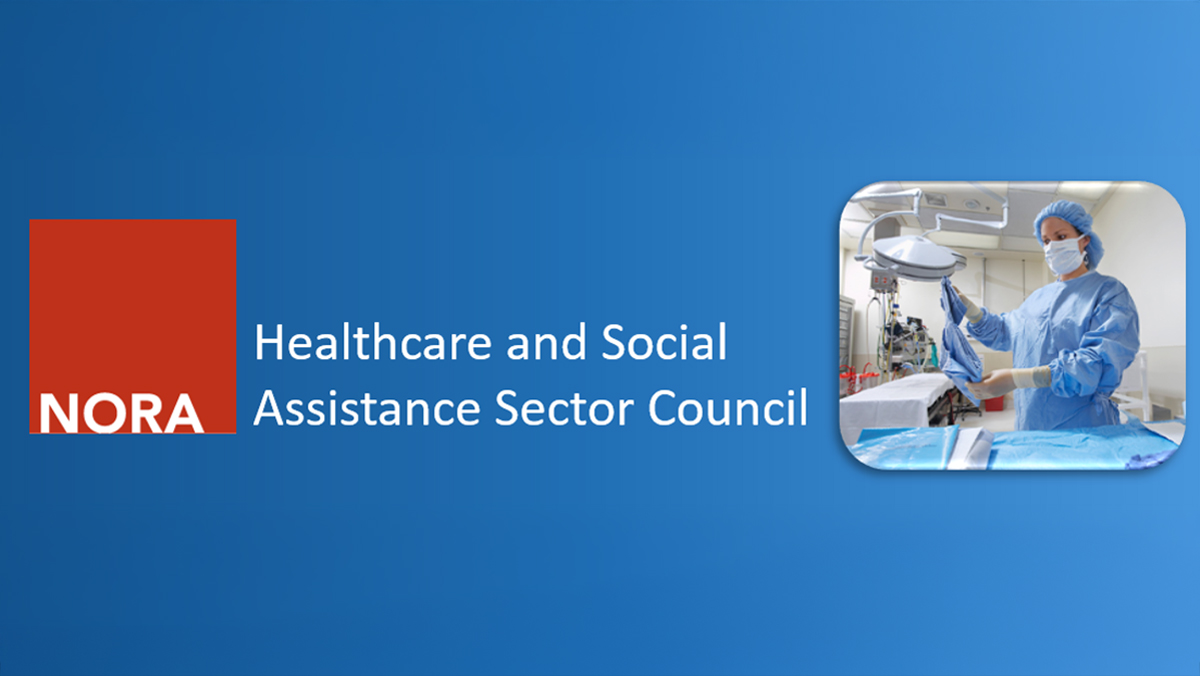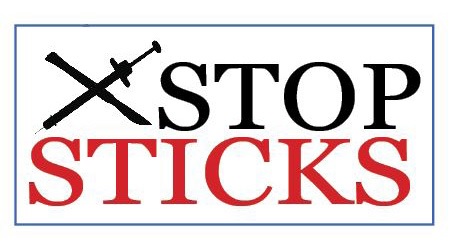About
The NORA Healthcare and Social Assistance Sector Council brings together individuals and organizations with a shared interest in improving the safety and health of workers in this industry sector. Council members share information, form partnerships, and promote adoption and dissemination of solutions that work.

Outreach
Safety Culture Training
Safety Culture in Healthcare Settings is a healthcare worker training course that provides scientific and evidence-based information. It focuses on six core competencies designed to increase knowledge about work-related hazards and address organizational and personal strategies to promote a safe and healthful work environment.
Stop Sticks Campaign
Webinar: Germicidal Ultraviolet Use in Healthcare Settings
Employees and patients in healthcare settings are at high risk for respiratory infection due to close contact and contamination of surfaces and air. Germicidal Ultraviolet (GUV) technology can be used as an advanced engineering control to reduce the spread of respiratory infections without changing existing patient care practices. In this webinar hosted by the National Institute for Occupational Safety and Health (NIOSH), four experts provide a comprehensive overview of GUV technology and its application in controlling respiratory infections in healthcare environments. The webinar aims to make valuable information accessible to healthcare professionals and researchers, supporting ongoing education and inspiring improvements in healthcare safety protocols.
Sector description
There are more than 21 million workers covered by the Healthcare and Social Assistance sector, with jobs that fall under three major North American Industry Classification System (NAICS) codes. This sector includes:
- Medical personnel, such as doctors, dentists, nurses, and other medical professionals.
- Social assistance workers, such as childcare and community housing, food, and relief services.
- Veterinary medicine and animal care workers, such as veterinarians and vet techs, dog groomers, and technicians in zoos and aquariums.
Health care and social assistance are grouped together because many organizations provide a mix of health care and social assistance. Because of the many similarities between health care and animal health care, this sector also includes workers engaged in veterinary medicine and pet care. Workers in the healthcare and social assistance industries face many occupational health and safety issues, including:
- Musculoskeletal disorders.
- Infectious diseases.
- Violence.
- Exposure to hazardous drugs and other chemicals.
The NIOSH Healthcare and Social Assistance Program facilitates the work of the Council and coordinates NIOSH research in this sector.
Members
The Council has two co-chairs, one from the NIOSH Healthcare and Social Assistance Program and one from a partner organization.
The NIOSH Healthcare and Social Assistance program coordinators also help to facilitate the work of the Council.
Current members
Name
Organization
Bonnie Rogers
Co-Chair
University of North Carolina at Chapel Hill
Suzanne Tomasi
Co-Chair
NIOSH
David Weissman
Program Manager
NIOSH
Christa Hale
Program Co-Coordinator
NIOSH
Sharon Silver
Program Co-Coordinator
NIOSH
Elizabeth Bien
Cincinnati Children’s Hospital and Medical Center
Elizabeth Bradshaw
NC State Laboratory of Public Health
Jennifer Brandt
American Veterinary Medical Association (AVMA)
Barbara Braun
The Joint Commission
Jill Byrne
Case Western Reserve University
Jenny Cassibry Fisher
Academy of Internal Medicine for Veterinary Technicians
Seth Clarenbach
Mayo Clinic
Pamela Dembski Hart
Health Accreditation Resources LLC
Lotte Dyrbye
Mayo School of Graduate Medical Education
Lynda Enos
HumanFit
Ruth Francis
American Nurses Association
Walter S. Gilliam
Yale Child Study Center
Peg Graham
QUA INC
Deirdre Green
Occupational Safety and Health Administration (OSHA)
Susan Hallbeck
Mayo Clinic
Robert Harrison
University of California, San Francisco
Warren Hess
American Veterinary Medical Association (AVMA)
Amanda Hessels
Columbia University School of Nursing
Tony Hilton
Veterans Health Administration
Beverly Hittle
University of Cincinnati
Michael Hodgson
OSHA
Emily Jones
Association of periOperative Registered Nurses (AORN)
Jagdish Khubchandani
New Mexico State University
David Kuhar
CDC, Division of Healthcare Quality Promotion
Angela Laramie
Massachusetts Department of Health
Sara Markle-Elder
American Federation of Teachers
Marie Martin
American Veterinary Medical Association (AVMA)
Angela Evette Maxwell
North Carolina Department of Health and Human Services
Melissa McDiarmid
University of Maryland School of Medicine
Amber Mitchell
International Safety Center
Regina Pana-Cryan
NIOSH
Peter Orris
University of Illinois at Chicago Medical Center
Barbara (Joene) Patterson
NIOSH
Patricia Podolak
Organization for Safety, Asepsis, and Prevention (OSAP)
Margaret Quinn
University of Massachusetts Lowell
Richard Rabin
Massachusetts Coalition for Occupational Safety and Health (MassCOSH)
Lew Radonvovich
NIOSH
Philip Richmond
Florida Veterinary Medical Association
Elizabeth Royal
SEIU National Nurse Alliance
Joni Scheftel
Minnesota Department of Health
Jessica Schifano
OSHA
Ron Smith
LS3P
Rosemary Sokas
Georgetown University
Madeline Sterling
Weill Cornell Medicine
Jane Thomason
National Nurses United
Jennifer Zlenick
Touro College Graduate School of Social Work
